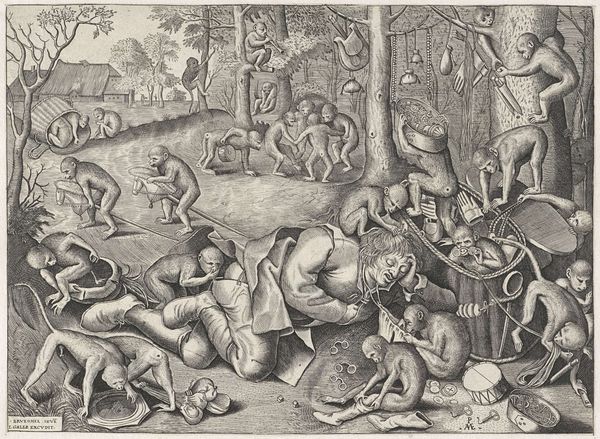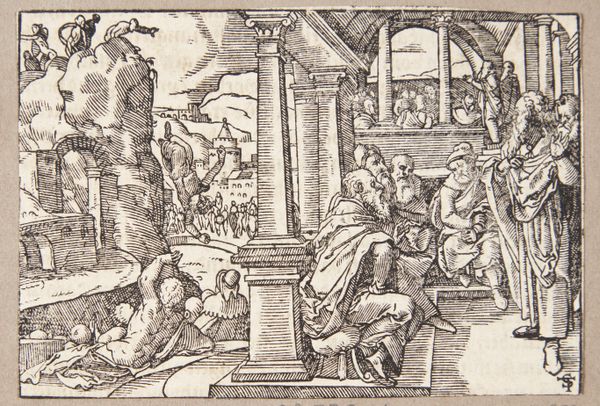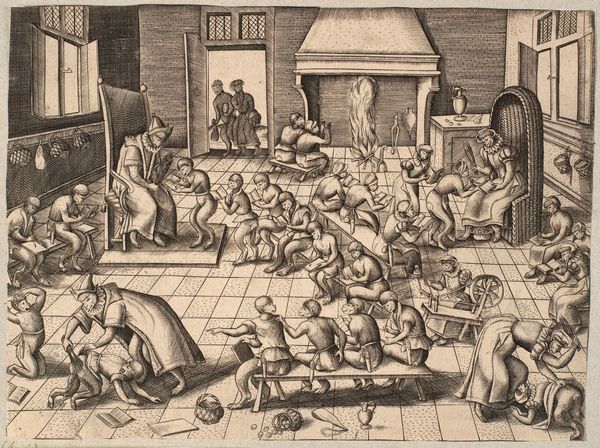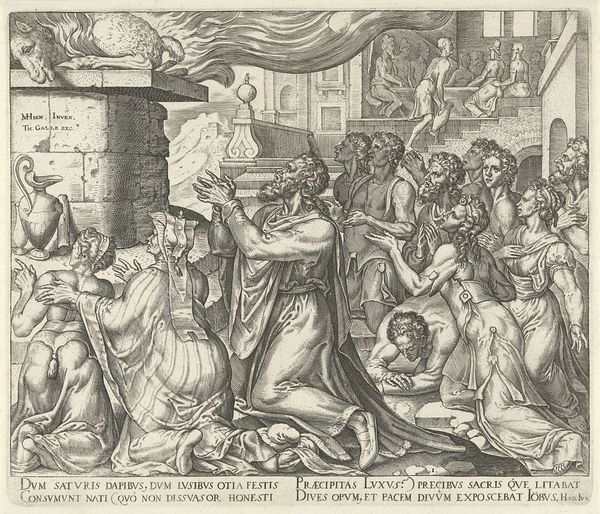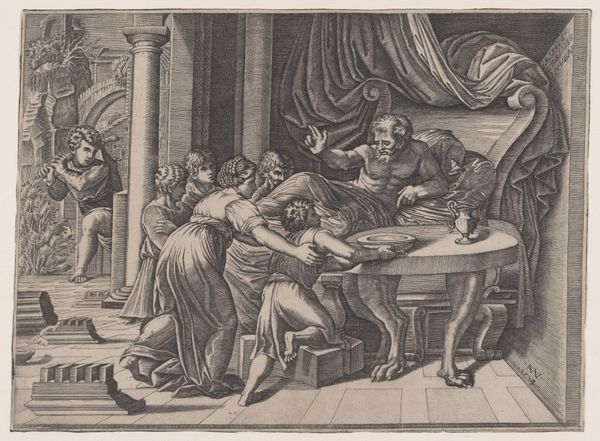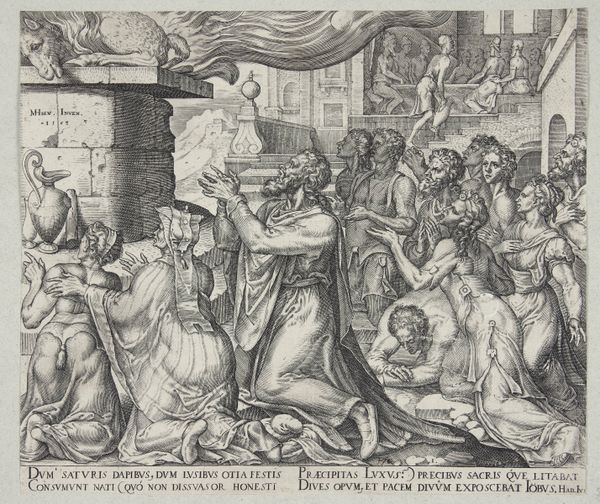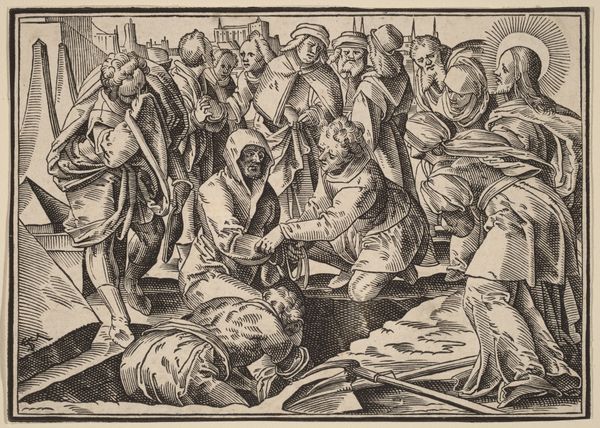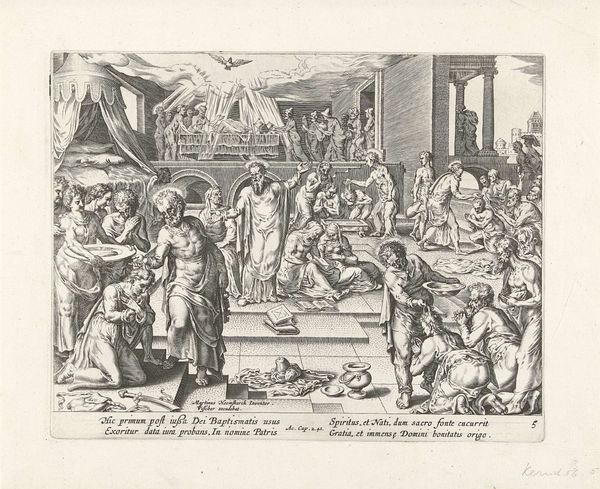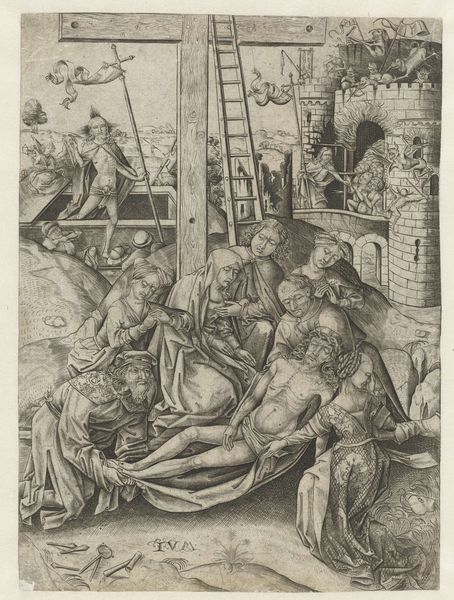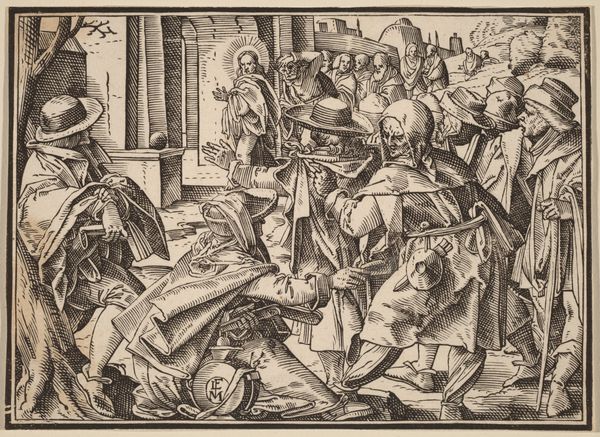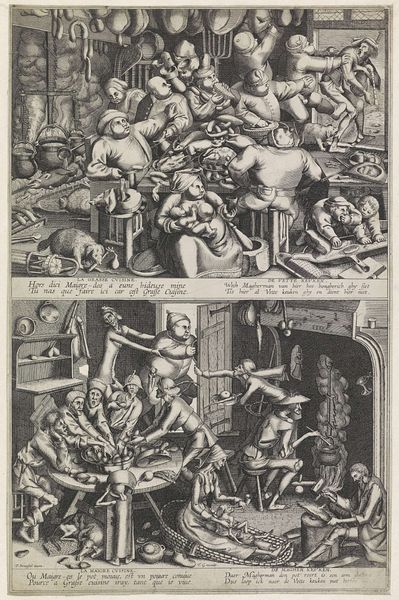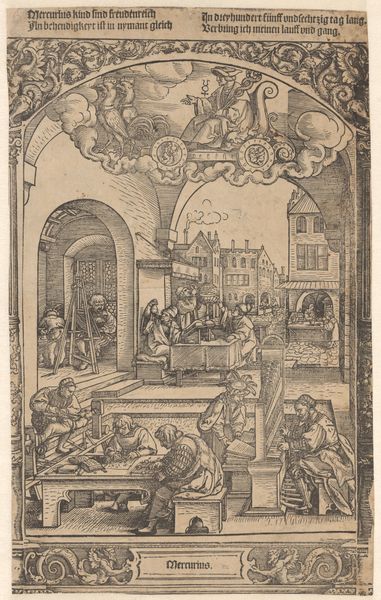
oil-paint
#
allegory
#
baroque
#
dutch-golden-age
#
caricature
#
oil-paint
#
landscape
#
figuration
#
oil painting
#
genre-painting
Copyright: Public Domain: Artvee
Editor: So, here we have "An Allegory of Tulipomania" by Jan Brueghel the Younger, an oil painting filled with monkeys in what looks like a very busy interior scene. It feels satirical. What do you make of it? Curator: Indeed. Brueghel cleverly uses simian figures to lampoon the Tulip Mania that gripped the Dutch Republic in the 1630s. Note how these monkeys, dressed in finery, engage in behaviors mimicking human investors: trading, examining tulips, even lamenting financial ruin, as symbolized by those discarded blooms on the floor. Editor: It's hard to miss the commentary. Is it saying something about human folly? Curator: Absolutely. The artist critiques the irrational exuberance and speculative frenzy that drove tulip prices to absurd heights, ultimately leading to widespread economic collapse. Consider the historical context: this painting emerges from a society grappling with newfound wealth and the risks of unchecked market speculation. It uses satire to reflect on, and perhaps even shape, public perception of those events. Editor: It’s interesting how accessible it is, despite the historical distance. Do you think it would have been seen as critical, even daring, at the time? Curator: Very likely. Satire always carries an edge. By associating human behavior with monkeys, Brueghel strips away dignity and exposes the absurdity of the situation. It invites the viewer to reflect on their own role, or that of society in general, within such bubbles. The museum displaying such a work then plays its own role in propagating that political message to a wider audience. Editor: It's fascinating how a painting about a 17th-century tulip craze can still speak to us today about our own economic bubbles. Curator: Exactly. Art offers a lens to examine recurring patterns of human behavior within the broader theatre of social and economic history. The artist shapes perception. The museum continues that conversation.
Comments
No comments
Be the first to comment and join the conversation on the ultimate creative platform.
